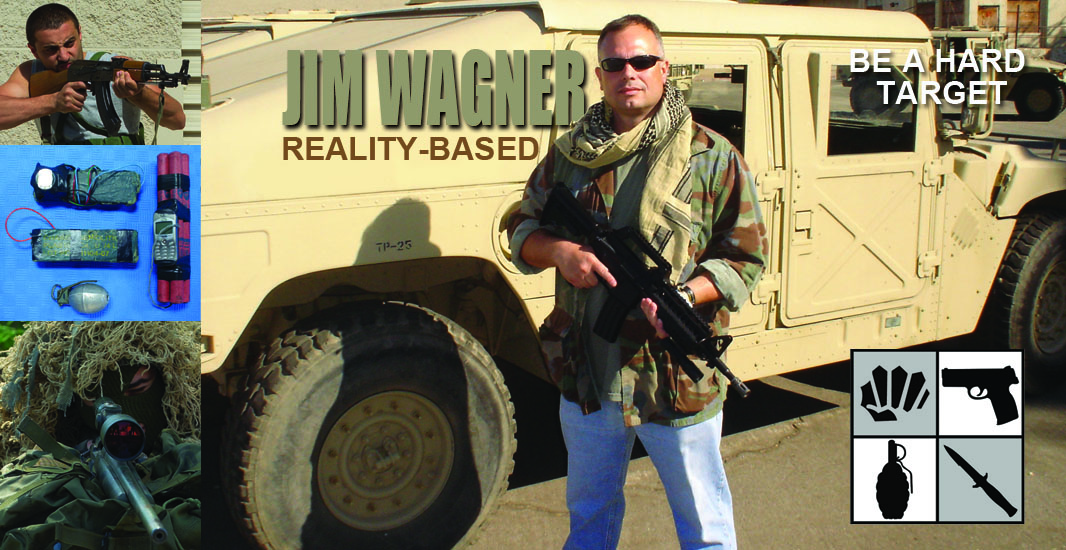Unlike traditional-based or sport-based martial arts, one of the most important components of the reality-based martial arts is the concept of “A to Z training.” What this means is that all technique training have three seamless phases: 1. A realistic starting point that parallels real life 2. Performance of applicable techniques 3. A finishing point that parallels real life.
The danger of not having the three phases of A to Z training can best be illustrated with an actual incident that occurred in Finland several years ago, which was told to me by Officer Vesa Syngelm, Use-of-Force Instructor, of the National Police School (Poliisikoulu) located in Tampere where I was teaching a course there in 2003 as a guest instructor. I am sure there have been countless unreported occurrences similar to this one around the world.
The story goes like this, a uniformed Finnish police officer was on patrol. A criminal came up to him and pointed a live pistol at the police officer to shoot him. Before the suspect could pull the trigger the officer flawlessly did a gun disarm and safely pulled the weapon from the suspect’s hand. Tragically, however, without even thinking, the police officer handed the loaded pistol back to the suspect a few moments later. Without a word being uttered, the suspect gladly took the weapon back. When the police officer realized what he had done, obviously the wrong thing to do, he immediately tried again to retake the weapon. The officer managed to once again pry the pistol from the suspect’s hand and follow up with an arrest. When the defensive tactics instructors of the National Police School heard about this incident they were mortified, because they knew that they were partly to blame.
A Closer Look at the Incident
So, why did the police officer in this true story give the pistol back to the suspect after a successful gun disarm? That’s right, you guessed it. The police officer did this very same move repeatedly during training, probably hundreds of times over the years, and ended up falling back on his training in a real incident. He properly conditioned himself to disarm someone pointing a weapon at him, but unfortunately, he also conditioned himself to hand it back to his training partner immediately after the technique was performed. His muscle-memory (repetition that commits a movement to be a conditioned response) inadvertently conditioned him to give a dangerous weapon back to a suspect. If this can happen to experienced police officers, how much more can it happen to civilian martial arts practitioners?
How to Train
Whenever you practice any conflict technique you should always perform it from start to finish from A to Z. For example, again using gun disarms as our teaching aid, nobody is going to just materialize in front of you pointing a gun. There will be some sort of activity prior to the assault, such as the suspect walking up to you then raising the weapon. The threatening action may be followed by verbal communication like, “Stick your hands up, and don’t move!” During the physical conflict phase a gun disarm is executed based upon proper timing and chances of success. However, rather than stopping the technique there, and handing the weapon back to the “suspect” (your training partner) like most schools teach, you must complete the action up to a realistic conclusion. In a real situation you would not intentionally hand the weapon back to the suspect. In any real situation you are going to take self-preserving action: running away, shooting the suspect with the disarmed weapon, using the pistol as an impact weapon (pistol whipping), or discarding the weapon in a safe direction (throwing the weapon out of the fight).
In all training you must take pains not develop bad habits. You must think about what the final moves should be to end up in a safe position. In the case of gun disarms you will disarm the subject, but you will run it all the way to an acceptable conclusion: get to the other side of the room if an escape is the chosen option, or force the suspect down at gun point or by force if a citizen’s arrest is what is required. In the case of today’s revised Finnish police training, they have changed their training doctrine considerably to avoid a repeat of wrong conditioned response when it comes to gun disarm techniques. Now instead of giving the weapon back to the trainer each time a gun disarm is performed, the trainee will complete the gun disarm, get to a point of safety, and maintain possession of the pistol. Then, instead of giving the pistol back to the trainer, the trainee now assumes the new role of the “suspect” (the trainer). Thus, the gun is never given back to the “bad guy,” and no bad habit conditioning is reinforced.
Be A Hard Target.



